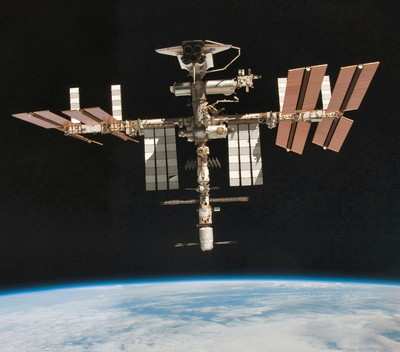Fri, Sep 14, 2012
Requests Proposals For Initial Contracts To Certify Commercial Crew Transportation Systems
NASA on Wednesday released a request for proposals for the first of two contract phases to certify commercially developed space systems in support of crewed missions to the International Space Station. Through these certification products contracts, NASA's Commercial Crew Program (CCP) will ensure commercial missions are held to the agency's safety requirements and standards for human space transportation system missions to the space station.

NASA's request for proposals outlines a two-phase approach in which the first phase awards will be made to multiple companies. The companies will provide data related to the development of their Crew Transportation System (CTS) design, including a spacecraft, launch vehicle, ground and mission operations and recovery. NASA plans to award up to $10 million to each company in early 2013 for the first phase.
The first phase will last about 15 months, during which companies will outline their strategies to meet the agency's required standards and safety requirements before a CTS could be approved to fly NASA astronauts to the space station. "We're looking forward to a strong U.S. industry response for this certification phase," said Ed Mango, NASA's CCP manager. "This is a major step in certifying transportation systems that can meet America's goal of transporting our astronauts to and from the space station."

At the conclusion of the first phase, the agency anticipates more than one company will be ready to compete for the second certification phase contract. The second phase will be open to any company with systems at the design maturity level of Phase 1. The second phase will include development, testing, evaluation and certification activities enabling NASA to assess and approve the CTS capability for performing space station missions in compliance with NASA requirements.
The objective of CCP is to facilitate the development of a U.S. commercial crew space transportation capability with the goal of achieving safe, reliable and cost-effective access to and from the space station and low Earth orbit. After the capability is matured and expected to be available to the government and other customers, NASA could contract to purchase commercial services to meet its station crew transportation needs.
More News
Terminal Radar Service Area Airspace surrounding designated airports wherein ATC provides radar vectoring, sequencing, and separation on a full-time basis for all IFR and participa>[...]
Aero Linx: Utah Back Country Pilots Association (UBCP) Through the sharing experiences, the UBCP has built upon a foundation of safe operating practices in some of the most challen>[...]
From 2010 (YouTube Edition): Imagine... Be The Change... Inspire FROM 2010: One of the more unusual phone calls I have ever received occurred a few years ago... from Anousheh Ansar>[...]
(Pilot) Felt A Shudder And Heard The Engine Sounding Differently, Followed By The Engine Chip Detector Light On April 14, 2025, about 1800 Pacific daylight time, a Bell 206B, N1667>[...]
Also: AMA Names Tyler Dobbs, More Falcon 9 Ops, Firefly Launch Unsuccessful, Autonomous F-16s The Air Force has begun ground testing a future uncrewed jet design in a milestone tow>[...]
 ANN's Daily Aero-Term (05.07.25): Terminal Radar Service Area
ANN's Daily Aero-Term (05.07.25): Terminal Radar Service Area ANN's Daily Aero-Linx (05.07.25)
ANN's Daily Aero-Linx (05.07.25) Classic Aero-TV: Anousheh Ansari -- The Woman Behind The Prize
Classic Aero-TV: Anousheh Ansari -- The Woman Behind The Prize NTSB Prelim: Bell 206B
NTSB Prelim: Bell 206B Airborne-NextGen 05.06.25: AF Uncrewed Fighters, Drones v Planes, Joby Crew Test
Airborne-NextGen 05.06.25: AF Uncrewed Fighters, Drones v Planes, Joby Crew Test




